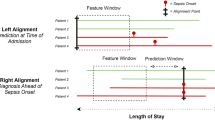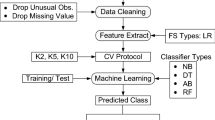Abstract
Neonatal mortality is one of the important health indicators and mortality prediction is applied for auditing and benchmarking, comparing the outcomes in neonatal intensive care units (NICUs), controlling individual differences in populations in clinical trials and evaluating efficacy. In this research work, we aimed to establish and compare two models (neural network and logistic regression models) for prediction of mortality in premature neonates upon admission to the NICU. This modeling research was conducted based on the information of 1618 neonates for prediction of mortality risk until the 28th day of life. In total, 80% and 20% of the data were considered for training and testing of the designed models, respectively. Finally, we achieved to predict the probability of infant mortality based on the 5th minute after birth data. Modeling was performed with two methods; neural network [multi layer perceptron (MLP) with education of back-propagation (BP)] and logistic regression (binominal form in MATLAB R2016a). The results showed that the MLP (with 60 neurons in the hidden layer) had more acceptable indices compared to logistic regression. While both neural network and logistic regression were able to predict the neonatal mortality risk, the neural network is more effective than logistic regression model in performance comparison.



Similar content being viewed by others
References
Akram Rezaeian HB, Mazlom SR (2012) Factors associated with perinatal mortality in preterm infants in NICU Ghaem Hospital, Mashhad. J North Khorasan Univ Med Sci 4(3):349–360
Ambalavanan N, Carlo WA (2001) Comparison of the prediction of extremely low birth weight neonatal mortality by regression analysis and by neural networks. Early Hum Dev 65(2):123–137
Basiri B, Ashari FE, Shokouhi M, Sabzehei MK (2015) Neonatal mortality and its main determinants in premature infants hospitalized in neonatal intensive care unit in Fatemieh hospital, Hamadan, Iran. J Compr Pediatr 6(3):e26965
Chan C, Chan E, Ng D, Chow P, Kwok K (2006) Application of artificial neural networks to establish a predictive mortality risk model in children admitted to a paediatric intensive care unit. Singap Med J 47(11):928
Chaudhari P, Agarwal H, Bhateja V (2019) Data augmentation for cancer classification in oncogenomics: an improved KNN based approach. Evol Intel. https://doi.org/10.1007/s12065-019-00283-w
Chowdhury DR, Chatterjee M, Samanta R (2011) An artificial neural network model for neonatal disease diagnosis. Int J Artif Intell Expert Syst (IJAE) 2(3):96–106
Gagliardi L, Cavazza A, Brunelli A, Battaglioli M, Merazzi D, Tandoi F, Stucchi I (2004) Assessing mortality risk in very low birthweight infants: a comparison of CRIB, CRIB-II, and SNAPPE-II. Arch Dis Child Fetal Neonatal Ed 89(5):F419–F422
Gurney K (2014) An introduction to neural networks. CRC Press, Boca Raton
Jaiyeola M, Oyamakin S, Akinyemi J, Adebowale S, Chukwu A, Yusuf O (2016) Assessing infant mortality in Nigeria using artificial neural network and logistic regression models. J Adv Math Comput Sci 19(5):1–14
Karthik S, Sudha M (2020) Predicting bipolar disorder and schizophrenia based on non-overlapping genetic phenotypes using deep neural network. Evol Intel. https://doi.org/10.1007/s12065-019-00346-y
Loia V, Tomasiello S, Vaccaro A, Gao J (2020) Using local learning with fuzzy transform: application to short term forecasting problems. Fuzzy Optim Decis Mak 19(1):13–32
Lukonga E, Michelo C (2015) Factors associated with neonatal mortality in the general population: evidence from the 2007 Zambia Demographic and Health Survey (ZDHS); a cross sectional study. Pan Afr Med J 20(1):2–5
Martin RJ, Fanaroff AA, Walsh MC (2010) Fanaroff and Martin’ neonatal–perinatal medicine e-book: diseases of the fetus and infant. Elsevier Health Sciences, Amsterdam
Nascimento LFC, Rizol PMSR, Abiuzi LB (2009) Establishing the risk of neonatal mortality using a fuzzy predictive model. Cadernos de saude publica 25:2043–2052
Panda B, Majhi B (2018) A novel improved prediction of protein structural class using deep recurrent neural network. Evol Intel. https://doi.org/10.1007/s12065-018-0171-3
Patrick SW, Schumacher RE, Davis MM (2013) Methods of mortality risk adjustment in the NICU: a 20-year review. Pediatrics 131(Supplement 1):S68–S74
Reddy GT, Reddy MPK, Lakshmanna K, Rajput DS, Kaluri R, Srivastava G (2019) Hybrid genetic algorithm and a fuzzy logic classifier for heart disease diagnosis. Evol Intel 13:185–196
Senthilkumar D, Paulraj S (2015) Prediction of low birth weight infants and its risk factors using data mining techniques. In: Paper presented at the Proceedings of the 2015 international conference on industrial engineering and operations management
Thimoty J, Hilmanto D, Yuniati T (2009) Score for Neonatal Acute Physiology Perinatal Extension II (SNAPPE II) as the predictor of neonatal mortality hospitalized in neonatal intensive care unit. Paediatr Indones 49(3):155–159
Tomasiello S (2019) A granular functional network classifier for brain diseases analysis. Comput Methods Biomech Biomed Eng Imaging Vis 8(4):1–7
Zernikow B, Holtmannspoetter K, Michel E, Pielemeier W, Hornschuh F, Westermann A, Hennecke K (1998) Artificial neural network for risk assessment in preterm neonates. Arch Dis Child Fetal Neonatal Ed 79(2):F129–F134
Acknowledgements
This article was financially supported by the vice-chancellor for research of Mashhad University of Medical Sciences. Hereby, we extend our gratitude to the mentioned vice-chancellor, as well as the personnel and physicians of the NICU of Qaem Hospital for cooperation with the research.
Author information
Authors and Affiliations
Corresponding author
Additional information
Publisher's Note
Springer Nature remains neutral with regard to jurisdictional claims in published maps and institutional affiliations.
Electronic supplementary material
Below is the link to the electronic supplementary material.
Rights and permissions
About this article
Cite this article
Rezaeian, A., Rezaeian, M., Khatami, S.F. et al. Prediction of mortality of premature neonates using neural network and logistic regression. J Ambient Intell Human Comput 13, 1269–1277 (2022). https://doi.org/10.1007/s12652-020-02562-2
Received:
Accepted:
Published:
Issue Date:
DOI: https://doi.org/10.1007/s12652-020-02562-2




